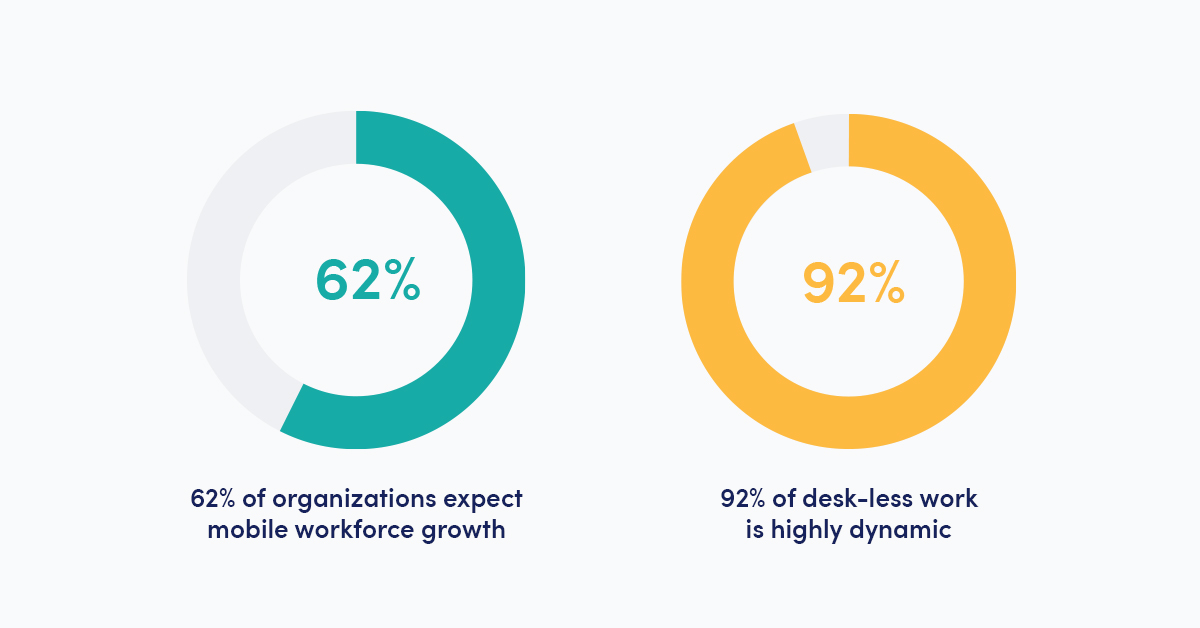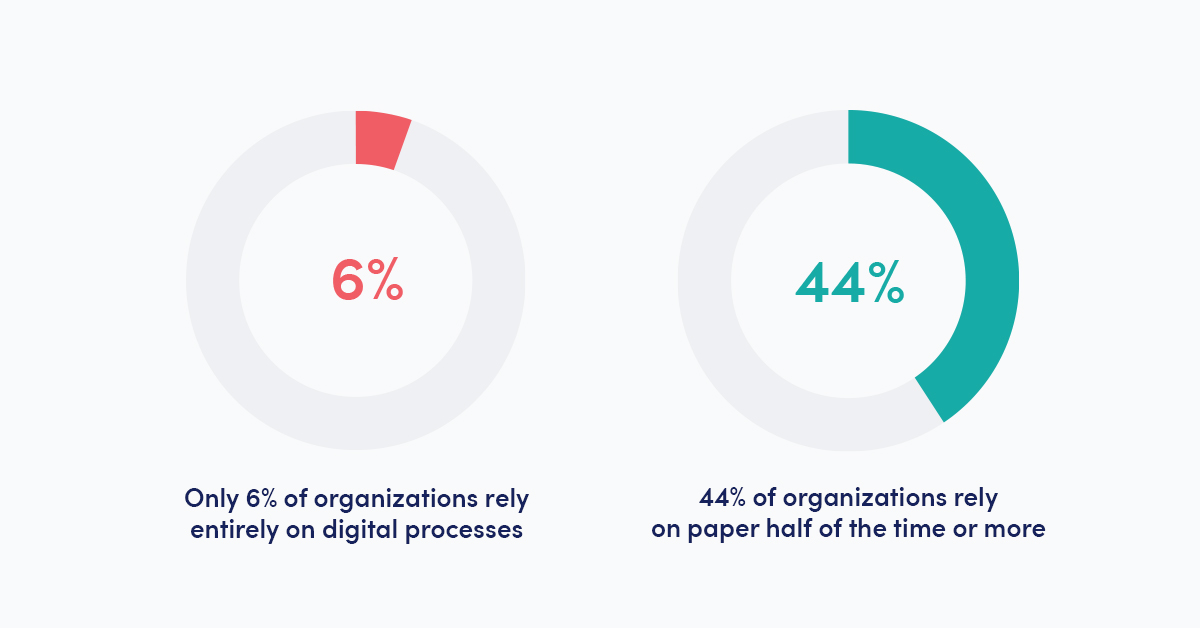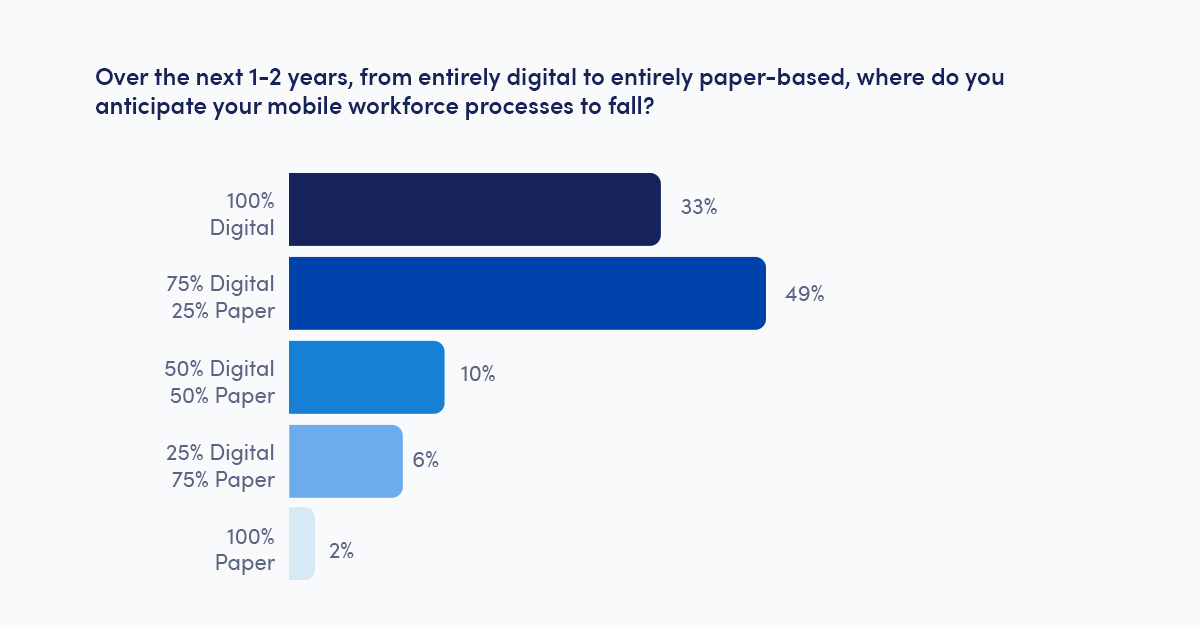As part of the extended community of frontline workers and the teams that support them, you likely already know how important—and challenging—deskless work is. But did you know that deskless workers outnumber desk-based workers across the globe four-to-one? Or that most organizations anticipate their mobile workforce to grow over the next year?
Meanwhile, we are entering an age of unprecedented worker empowerment due to a confluence of factors: increasingly competitive talent markets, a growing “free agent” mentality among skilled mobile workers, and the allure of flexible employment options courtesy of the gig economy. The criticality of retention and the cost of attrition for employers with mobile workers has never been greater.
Executive Summary
This report illustrates both our challenging current state and the opportunity in front of us. Today’s deskless workers are largely deprived of autonomy, are ill equipped to handle increasingly dynamic and complex work environments, and see their leadership continue to prioritize alternative investment areas.
Standout findings from this research include:
- Deskless work is highly dynamic: 92% of organizations report their deskless workers’ jobs are regularly cancelled, distributed across many locations, composed of many different work types, each requiring a specific set of worker skills, attributes, and formal certifications.
- Organizations with a high volume of deskless workers lag behind in digital transformation: only 6% of respondents rely entirely on digital processes for deskless work, while 44% of organizations rely on paper-based processes half of the time or more.
- Deskless workers lack autonomy and control: only 6% of organizations feel their deskless workforce is “very autonomous”, while less than one-in-ten deskless workers have “a high degree” of control over their schedule and nearly one-in-three have low or limited control.
- While the value of autonomy is recognized, the employee experience ranks low among strategic priorities: 97% of organizations agree increased employee autonomy would improve retention, client satisfaction, performance, and market share, with nearly one-in-six respondents strongly agreeing. However, improving employee experience and empowering mobile workers ranked lowest among strategic priorities for respondents.
Our hope is that this report serves as a springboard for reflection and dialogue within your organization, a reference point for conducting your own internal research, and a catalyst for a more productive, positive, and impactful state of deskless productivity.
Deskless Work is Increasingly Prevalent, Important, and Dynamic
Deskless work comprises a wide range of roles and industries, from mobile caregivers delivering healthcare services in the home to telecommunications technicians servicing equipment in the field, from solar energy technicians installing solar panels on roofs across the world to CPR trainers delivering classes on the road.
The deskless workforce is large, with 80% of the global workforce consisting of mobile—or deskless—workers, outnumbering desk-based workers four-to-one.
In fact, in the August 2020 Skedulo study Solving the Software Gap for the Growing Community of Deskless Workers, over three quarters of respondents indicated their workforce includes at least a double-digit percentage of deskless workers, while 14% of organizations shared that more than half of their workforce is deskless.
In our 2021 survey, even in the midst of the pandemic, 62% of organizations expected their mobile workforce to increase over the next 12-24 months, while 34% anticipated that portion of their employee base would remain consistent. Only 1 in 20 organizations expected a decrease in the size of their deskless workers.
Organizations with Deskless Workers Lag Behind in Digital Transformation
Despite the complex and dynamic nature of this work, deskless workers remain woefully ill-equipped compared to their desk-based counterparts.
According to a 2018 study by Emergence Capital, 99% of software venture capital investments target software aimed at desk-based workers. Considering the four-to-one ratio of deskless to desk-based workers, deskless work represents an underinvested in area by a factor of 80 based on the sheer volume of workers.
In an August 2020 Skedulo study, despite touting a high percentage of deskless workers at their companies, 76% of CIOs agreed or strongly agreed that software vendors have overlooked deskless workers with regards to their product needs. Not one respondent strongly disagreed with this sentiment.
Our 2021 survey, based on 200+ leaders in organizations with a significant mobile workforce, showed that most companies are still in a surprisingly early stage of digital maturation.
When asked to identify roughly what percentage of their deskless work operations were paper-based versus digital-based, it was revealed that only 6% of organizations relied entirely on digital processes for deskless work. Meanwhile, 44% of organizations rely on manual, paper-based processes half of the time or more—including important tasks such as dispatching and allocating work, task tracking, work documentation, and so on.
Optimism springs eternal, though, as 33% of organizations anticipate arriving at a 100% digital-based world for deskless workers in the next one to two years. However, roughly 1 in 6 organizations expect to remain locked into paper-based processes at least half of the time in the next two years.
Communication for Deskless Workers is Challenging and Remains Fragmented
One of the primary challenges of deskless work is facilitating communication modalities for deskless workers, like the communication between fixed-location workers (e.g. schedulers, dispatchers, and/or managers) and mobile workers, as well as mobile workers and their clients in the field.
Ad hoc communication via email or phone is the primary option for a shockingly high 67% of organizations, while over 1 in 5 organizations lack a dedicated messaging application at all. Meanwhile, half of deskless workers are forced to communicate in a different application than what they already operate out of to manage and execute mobile work, which requires juggling between applications while in the field.
Report Demographics
This report was based on a global study of 240 respondents that were identified as individuals in organizations with a deskless workforce that ran from August 2021 to September 2021, with the demographics as follows.
Region
74% North America | 14% EMEA | 12% APAC
Title / Level
28% CxO | 33% VP | 38% Director | 1% Manager
This report also included insights from interviews with deskless workers conducted from January 2020 through October 2021.








